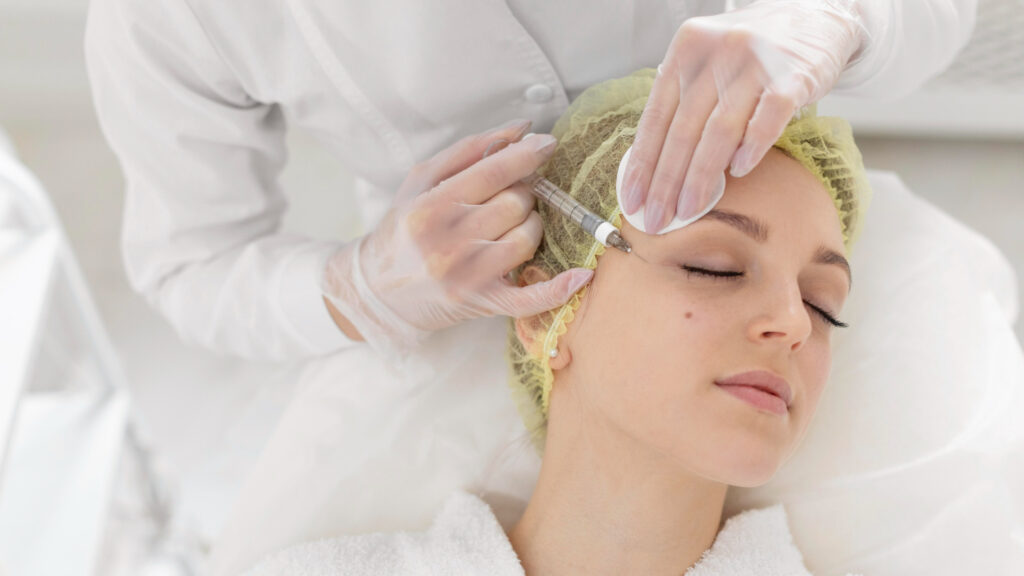Botox plays a helpful role in cosmetic procedures aimed at reducing the appearance of facial wrinkles. In addition to this aesthetic-centered application, Botox has the potential for a range of uses. These applications extend beyond aesthetics.
Health-conscious adults who are evaluating treatment options may benefit from understanding the broader potential of this injectable agent. It helps with various health concerns when guided by a professional. Here is more information on what Botox is, the treatment process, its cosmetic and non-cosmetic applications, and treatment frequency guidelines:
What Is Botox?
Botox is a purified protein derived from the bacterium Clostridium botulinum. The formulation used in medical treatments is highly controlled and administered in small, specific doses. It works by temporarily blocking signals between nerves and muscles, reducing muscle activity in the targeted area. This mechanism underpins both its cosmetic and non-cosmetic applications.
What Does the Process Involve?
Treatments are delivered by a licensed healthcare provider in a clinical setting. The process typically involves evaluating the patient’s health history and determining the appropriate dosage and injection sites. Small amounts of the solution are injected into targeted muscle groups with a fine needle. The procedure is brief and usually performed without anesthesia, although a topical anesthetic may be used for comfort.
What Is Its Role in Cosmetics?
The cosmetic use of Botox focuses on temporarily reducing fine lines and wrinkles, especially those caused by repetitive facial movements such as frowning or squinting. By diminishing targeted muscle contractions, Botox helps create a smoother skin appearance. Effects are most commonly observed in areas such as the forehead, around the eyes, and between the eyebrows. Results typically appear within a few days and can last several months.
How Else Is Botox Beneficial?
Botox’s mechanism of muscle relaxation has several non-cosmetic applications under the guidance of healthcare professionals. Patient experiences may highlight the potential for this treatment to help manage symptoms in various conditions.
- Chronic migraine management: Botox may be administered to help reduce the frequency of migraine episodes in patients who meet specific criteria.
- Hyperhidrosis (excessive sweating): When injected into areas such as the underarms or palms, Botox can decrease sweat production by targeting sweat glands.
- Eye disorders: Botox injections can help manage muscle-related eye conditions, such as strabismus (misaligned eyes) and blepharospasm (involuntary blinking).
- Overactive bladder: Treatment can decrease urinary frequency and urgency in patients experiencing overactive bladder symptoms.
- Dystonia: Botox may help by lessening involuntary muscle contractions and improving comfort for patients with dystonia, a movement disorder.
Each of these uses is subject to medical evaluation and ongoing study, with specific treatment protocols tailored to individual patient needs.
How Often Are Treatments Needed?
Treatments with Botox typically require repeat sessions to maintain effects, whether the goal is cosmetic or non-cosmetic. Most effects last for three to six months before gradually diminishing. Subsequent injections are scheduled based on the patient’s response and guidance from the healthcare provider. The frequency of treatments may be adjusted based on results and symptom management.
Seek Expert Guidance Today
Botox offers a range of potential benefits. These extend beyond just cosmetic enhancement. Its applications in migraine management, excessive sweating, eye muscle disorders, overactive bladder, and dystonia have made it an option for those exploring treatment strategies.
For individuals evaluating Botox, seeking a consultation with a qualified healthcare provider is recommended. Professional evaluation makes sure that treatment aligns with personal health needs. It also allows for administration in accordance with safety standards.

